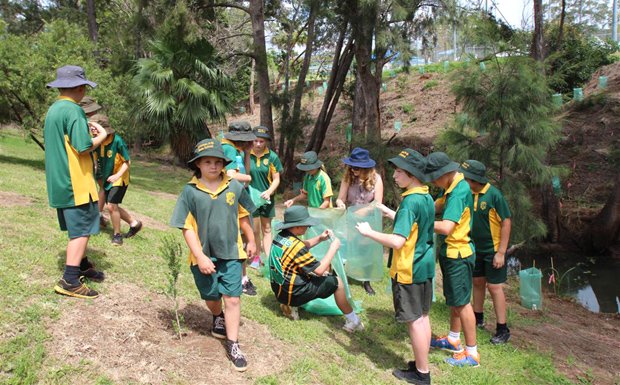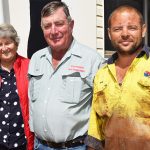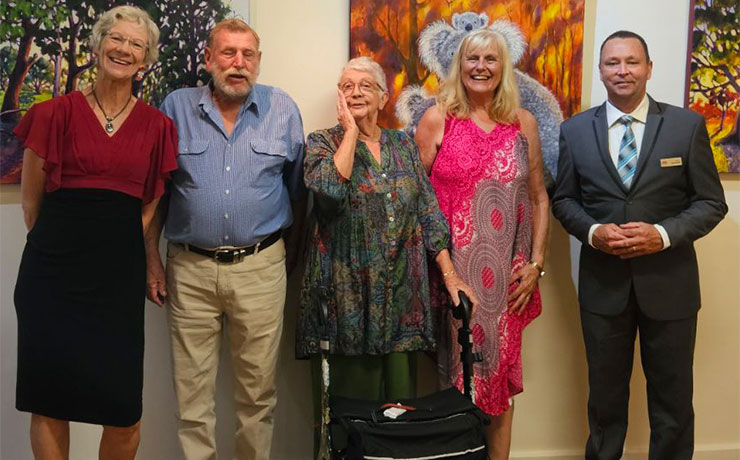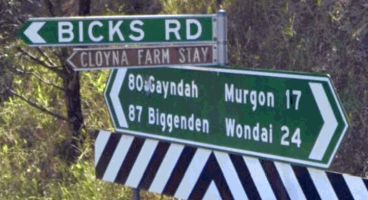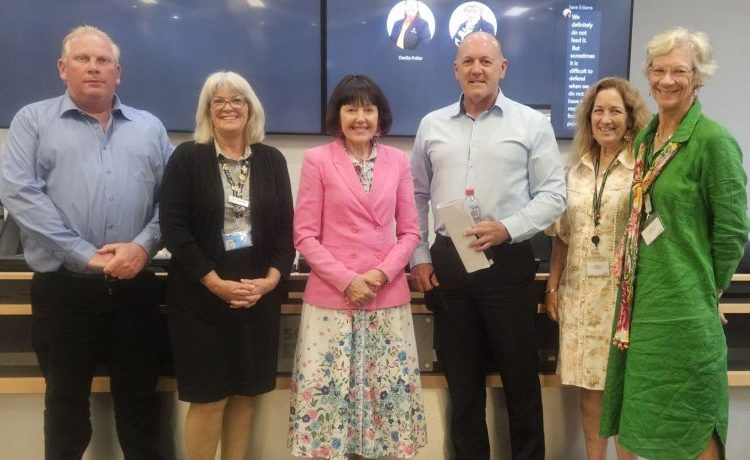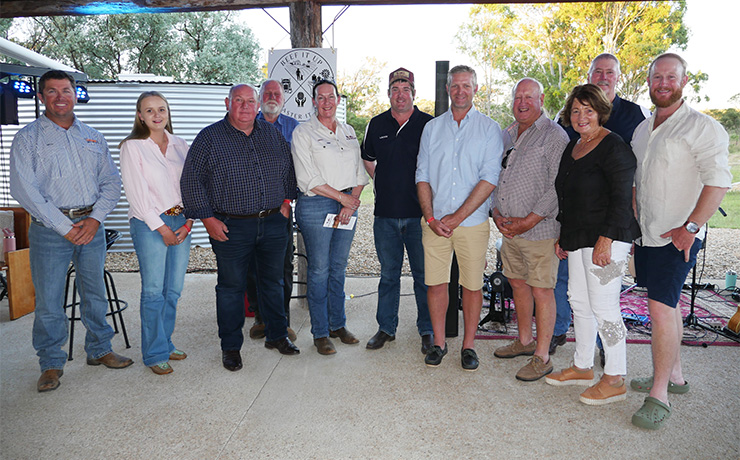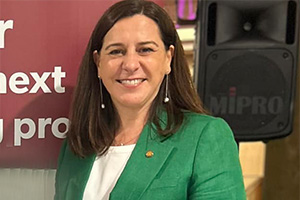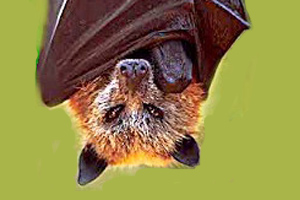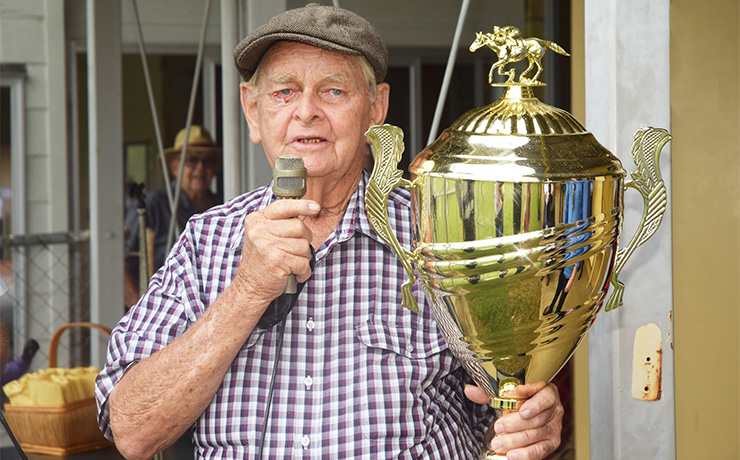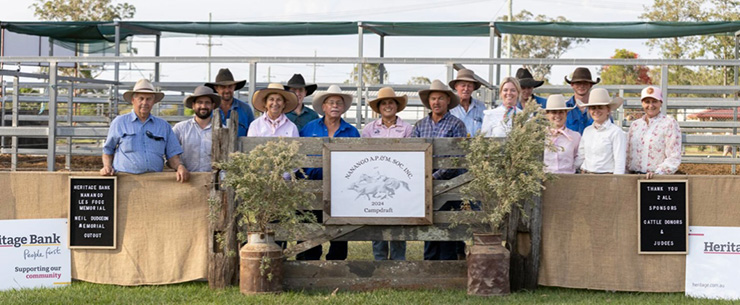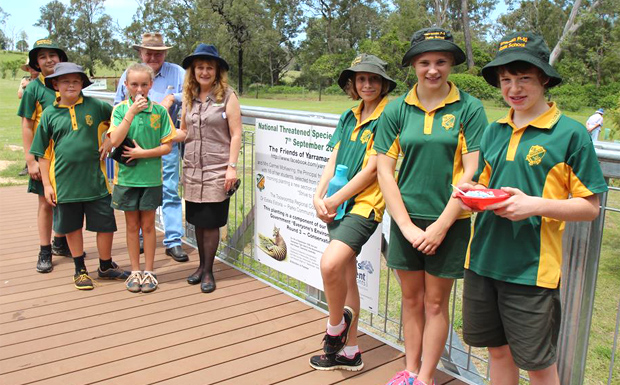
December 10, 2015
Three months after they helped replant the final section of the Yarraman Creek rehabilitation project, students from Yarraman State School were back at the creek on Wednesday for the unveiling of a new sign that commemorates their efforts.
The creek, which runs along the southern side of Errol Munt Park on the New England Highway, was the overgrown home of weeds and trash until local environmentalists took an interest in restoring it.
For the last few years, the Friends Of Yarraman Creek have patiently cleared tonnes of weeds and rubbish from a kilometre-long section of the creek’s banks adjoining the parklands, then replanted the area with Australian natives.
The result of their efforts is that Yarraman Creek has sprung back to life.
Australian native birds and animals – including platypus – now thrive in it; and the carefully tended area that was a wasteland and an eyesore just a few years ago has become a drawcard for environmentalists, conservationists and the general public.
The Friends Of Yarraman Creek admit they encountered some initial resistance to the idea of restoring the creek from a few locals who thought the mammoth project was impossible for a small group of volunteers to achieve.
But as the years have passed and the creek has slowly been restored, resistance have been replaced by honest praise and a growing level of community support.
On September 7 this year, students from Yarraman State School spent the morning with the Friends Of Yarraman Creek planting the final section of the project.
September 7 was National Threatened Species Day, a day chosen because it marked the death of the last Tasmanian Tiger in captivity in Hobart Zoo in 1936, and the Friends were keen to pass on their love of the natural environment to the town’s younger generation.
Principal Carmel McKeering – a biologist before she became a professional educator – leapt at the opportunity, bringing along sixteen of her best Grade 3 to Grade 9 students as a special treat for their outstanding work at school.
On Wednesday this week, the students and Carmel McKeering came back to witness the unveiling of a sign that marks the work they undertook on the project, and the special role their school played in the creek’s rehabilitation.
Students also got the opportunity to lift protective sheeting off many of the natives they’d planted to see just how much they’d grown in the last three months.
Member for Nanango Deb Frecklington – a long-time supporter of the group’s efforts – and Environment Minister Dr Steven Miles were both unavailable to perform the sign’s unveiling, so the job fell to patrons Bill and Jean Hobbs, who said they were very happy to do the honours.
The sign is now fixed to the side of the modern steel and wood bridge Toowoomba Regional Council have built to connect Errol Munt Park with the Yarraman Sports Fields on the opposite side of the creek.
The bridge crosses downstream of the area the students helped restore.
The State Government paid for the sign through an “Everyone’s Environment” grant, and the design was executed by Christy Stephens from Country Design and Print in Kingaroy.
Afterwards, guests got to enjoy refreshments and be entertained by Friends Of Yarraman Creek president Scott Reilly, who taught his song “Plant A Seed” to the students.
- Related article: Creek Project Hits A Milestone
[Photos: Susan Reilly]
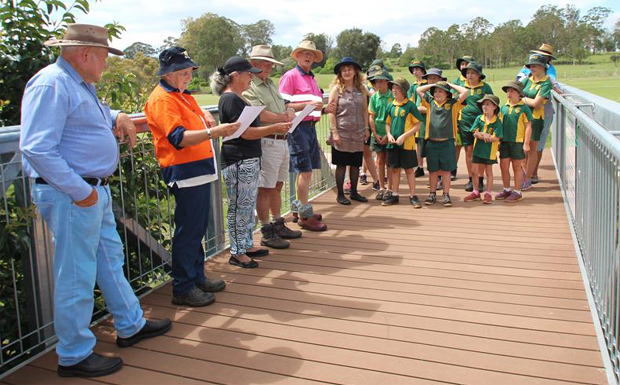
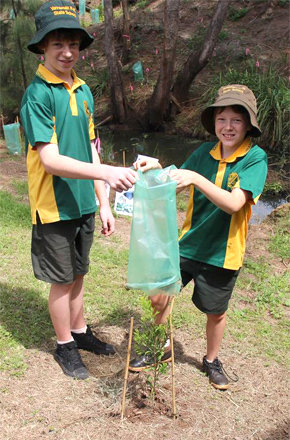 |
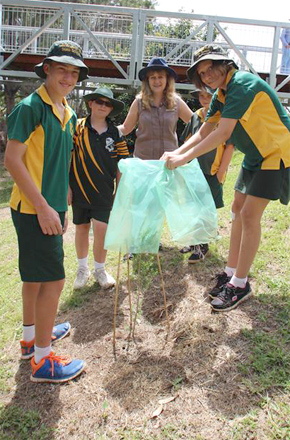 |
 |
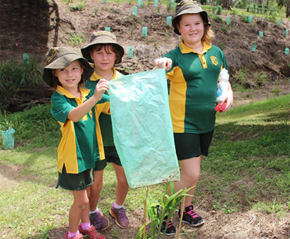 |
